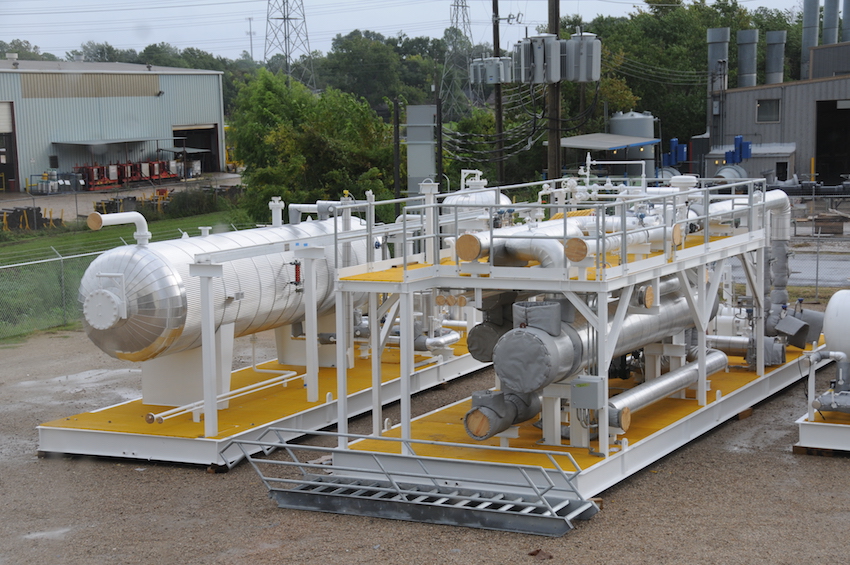
Ultrahigh-Pressure H2S Removal
In a white paper article for “Gas Processing News,” P. Roberts discusses the various technologies that are available for ultra high-pressure H2S removal. The acid gas removal unit (AGRU) provided two different design options to the client in order to improve efficiency.
- The first option was a high-pressure (HP) design. Using standard compression technology, the AGRU had a pressure of 80 bara, while the triethylene glycol (TEG)/molecular sieve dehydration was also reduced to a pressure of 80 bara.
- The second option was the ultra high-pressure design, where both the AGRU and the triethylene glycol (TEG)/molecular sieve dehydration were set to a rate of 160 bara.
Interestingly, the end result of these design options was that neither was approved, not due to lack of efficiency, but due to lack of means to find a suitable dehydration method at this level of pressure. As a follow-up, though, Roberts concluded that TEG dehydration technology was better suited for this kind of H2S removal than any other kind of available dehydration technology.
Fractionation
Fractionation in natural gas processing is another cool bit of technology. According to IHRDC, the actual fractionation process is dependent not only on the nature of the gas being processed, but also on the expenditure of energy being processed in order to turn the gas into an NGL (natural gas liquid). Only methane and ethane remain as a gas; the follow-up process, called the cryogenic expander process, separates the rich gas into methane and NGLs. This separation method is second in popularity only to the absorption process.
While many of these methods haven’t changed over the years, the efficiency has increased exponentially, which means that more of these gases can be processed at a much quicker rate, and at a much less cost, than previously believed to be possible. Ultimately, the most important part of running a natural gas plant is the ability to process the natural gas in a way that is not only time-efficient, but also cost-efficient, and fractionation helps to achieve that.
Integrated Packaging Solutions
Rebecca Liebert, who is an analyst at UOP (a Honeywell company), describes one of the most impressive pieces of modern gas processing technology integration packaging solutions. After describing the vast number of solutions available, especially as they pertain to selecting the proper gas processing solutions, Liebert recommends individualized solutions be prepared for small and mid-sized businesses that are contingent upon what their individual needs are. “An integrated flow scheme will provide higher overall facility operating efficiency, increased hydrocarbon recovery, and increased sulfur recovery compared to a conventional flow scheme that utilizes liquid phase desulfurization,” she writes.
These three technologies are just a few of the many that show how advanced, and how “cool,” gas processing is in the 21st century. Even though the actual processes haven’t evolved much over the years, the technology certainly has, to the point that the modern natural gas processing plant is one of the most technologically advanced systems around. It’s important to remember that no two natural gas processing plants are alike, and what works for one plant may not work for another. It’s imperative that costs and implementation procedures be considered before executing any “cool” technology.
____________________
UPDATE (10/04/2016
Rebecca Liebert is now the CEO of UOP, former VP of Gas Processing and Hydrogen.